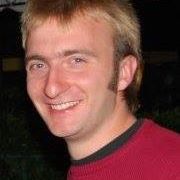Studiare
In questa sezione è possibile reperire le informazioni riguardanti l'organizzazione pratica del corso, lo svolgimento delle attività didattiche, le opportunità formative e i contatti utili durante tutto il percorso di studi, fino al conseguimento del titolo finale.
Calendario accademico
Il calendario accademico riporta le scadenze, gli adempimenti e i periodi rilevanti per la componente studentesca, personale docente e personale dell'Università. Sono inoltre indicate le festività e le chiusure ufficiali dell'Ateneo.
L’anno accademico inizia il 1° ottobre e termina il 30 settembre dell'anno successivo.
Calendario didattico
Il calendario didattico indica i periodi di svolgimento delle attività formative, di sessioni d'esami, di laurea e di chiusura per le festività.
| Periodo | Dal | Al |
|---|---|---|
| I semestre | 1-ott-2019 | 31-gen-2020 |
| II semestre | 2-mar-2020 | 12-giu-2020 |
| Sessione | Dal | Al |
|---|---|---|
| Sessione invernale d'esame | 3-feb-2020 | 28-feb-2020 |
| Sessione estiva d'esame | 15-giu-2020 | 31-lug-2020 |
| Sessione autunnale d'esame | 1-set-2020 | 30-set-2020 |
| Sessione | Dal | Al |
|---|---|---|
| Sessione Estiva. | 16-lug-2020 | 16-lug-2020 |
| Sessione Autunnale. | 15-ott-2020 | 15-ott-2020 |
| Sessione Invernale. | 18-mar-2021 | 18-mar-2021 |
| Periodo | Dal | Al |
|---|---|---|
| Festa di Ognissanti | 1-nov-2019 | 1-nov-2019 |
| Festa dell'Immacolata | 8-dic-2019 | 8-dic-2019 |
| Vacanze di Natale | 23-dic-2019 | 6-gen-2020 |
| Vacanze di Pasqua | 10-apr-2020 | 14-apr-2020 |
| Festa della Liberazione | 25-apr-2020 | 25-apr-2020 |
| Festa del lavoro | 1-mag-2020 | 1-mag-2020 |
| Festa del Santo Patrono | 21-mag-2020 | 21-mag-2020 |
| Festa della Repubblica | 2-giu-2020 | 2-giu-2020 |
| Vacanze estive | 10-ago-2020 | 23-ago-2020 |
Calendario esami
Gli appelli d'esame sono gestiti dalla Unità Operativa Segreteria Corsi di Studio Scienze e Ingegneria.
Per consultazione e iscrizione agli appelli d'esame visita il sistema ESSE3.
Per problemi inerenti allo smarrimento della password di accesso ai servizi on-line si prega di rivolgersi al supporto informatico della Scuola o al servizio recupero credenziali
Per dubbi o domande leggi le risposte alle domande più frequenti F.A.Q. Iscrizione Esami
Docenti
 mariacaterina.baruffi@univr.it
mariacaterina.baruffi@univr.it
 maurizio.boscaini@univr.it
maurizio.boscaini@univr.it
 federico.busato@univr.it
federico.busato@univr.it
Piano Didattico
Il piano didattico è l'elenco degli insegnamenti e delle altre attività formative che devono essere sostenute nel corso della propria carriera universitaria.
Selezionare il piano didattico in base all'anno accademico di iscrizione.
1° Anno
| Insegnamenti | Crediti | TAF | SSD |
|---|
One course to be chosen among the followingTwo courses to be chosen among the following2° Anno Attivato nell'A.A. 2020/2021
| Insegnamenti | Crediti | TAF | SSD |
|---|
Three courses to be chosen among the following| Insegnamenti | Crediti | TAF | SSD |
|---|
One course to be chosen among the followingTwo courses to be chosen among the following| Insegnamenti | Crediti | TAF | SSD |
|---|
Three courses to be chosen among the following| Insegnamenti | Crediti | TAF | SSD |
|---|
Legenda | Tipo Attività Formativa (TAF)
TAF (Tipologia Attività Formativa) Tutti gli insegnamenti e le attività sono classificate in diversi tipi di attività formativa, indicati da una lettera.
Programming laboratory for bioinformatics (2019/2020)
Codice insegnamento
4S004548
Crediti
12
Lingua di erogazione
Inglese
Settore Scientifico Disciplinare (SSD)
INF/01 - INFORMATICA
L'insegnamento è organizzato come segue:
Laboratorio
Teoria
Obiettivi formativi
Il corso ha l’obiettivo di fornire gli strumenti di programmazione necessari per l’analisi di dati genomici, trascrittomici e proteomici provenienti dalle tecnologie di ultima generazione.
Conoscenza e capacità di comprensione L'insegnamento ha l'obiettivo di fornire allo studente la conoscenza e comprensione dei paradigmi e strumenti di programmazione avanzata per la gestione di dati e informazioni biomediche/bioinformatiche.
Conoscenze applicate e capacità di comprensione Lo studente sarà dunque in grado di a) applicare i paradigmi e strumenti di programmazione avanzata per l’analisi di dati genomici, trascrittomici e proteomici; b) applicare l'analisi delle prestazioni del codice e individuazione di criticità e loro ottimizzazione.
Autonomia di giudizio Capacità di proporre in modo autonomo soluzioni efficaci ed efficienti per il dominio applicativo biomedico e bioinformatico; capacità di individuare le criticità per il trattamento di problemi complessi di bioinformatica.
Abilità comunicative Lo studente sarà, inoltre, in grado di interagire con interlocutori vari in un ambito multidisciplinare biomedico e bioinformatico, relazionarsi con i colleghi nello svolgimento di lavori in gruppo, e relazionarsi con gli interlocutori nell'ambiente lavorativo o di ricerca.
Capacità di apprendere Capacità di comprendere la letteratura scientifica nel processo di interpretazione dei risultati o soluzione proposta, e di svolgere lavori di approfondimento individuale e di gruppo volti ad affrontare problemi dal mondo della ricerca e aziendale.
Programma
Programmazione in R
Panoramica e storia di R
Workspace and Files
Oggetti e strutture dati
Valori mancanti
Sequenza di numeri
Subsetting
Le funzioni Split-Apply-Combines
Simulazione
Leggere dati tabulari
Logica
Strutture di controllo
Operazioni di I / O
Funzioni
Grafica di base
Grafica avanzata
Bash: linguaggio di scripting
Panoramica del linguaggio di scripting
Varabili
Matrici indicizzate
Matrici associative
Dichiarazioni e operatori condizionali
Operatori di confronto
Loops
I / O da file
Funzioni
R per bioinformatica
Panoramica di BioConductor
Strutture dati di base BioConductor: IRanges e GenomicRanges
Classi e funzioni per rappresentare le stringhe biologiche: Biostrings
Classi e funzioni per rappresentare i genomi: BSgenome, GenomicRanges,
Funzioni di annotazione e panoramica degli strumenti web di annotazione
Analisi dei dati RNA-SEQ utilizzando R / Python e strumenti web
Introduzione alle tecnologie NGS e progettazione sperimentale
Preprocessing dei dati, da Fastq a BAM
Indexing Reference Genome
La mappatura dei reads su un genoma di riferimento
Indicizzazzione e ordinamento negli allineamenti
Controllo della qualità della mappatura
Scoperta di varianti e call set di perfezionamento
Analisi differenziale
Limma, Glimma, EdgeR
DESeq2
Pratica su RNA codificante e non codificante
Statistiche applicate per High-Throughput Data Mining
Introduzione alle variabili e alla distribuzione
Modellazione lineare
Modellazione lineare e generalizzata
Matrici modello e formule modello
Analisi delle variabili categoriali, analisi dei dati esplorativi, test multipli
Analisi unsupervised
Distanza in alte dimensioni
Principali analisi dei componenti e ridimensionamento multidimensionale
Clustering
Metodi di partizione
Metodi gerarchici
Metodi basati sulla densità
Effetti batch
Analisi avanzate dei dati biologici in R: metodi per grafici e reti.
Reti in igraph
Crea reti
Edge, vertice e attributi di rete
Grafi e modelli di grafi specifici
Lettura di grafi dai file
Trasformare le reti in oggetti igraph
Visualizzare le reti con igraph
Descrittive di rete e nodi
Distanze e percorsi
Sottogruppi e comunità
Assortatività e omofilia
Ricostruzione e analisi di reti co-regolatorie e co-espresse
Il corso include seminari su argomenti avanzati come i metodi computazionali per l'analisi di dati di singole cellule, graph mining e reti multistrato. Gli argomenti sono definiti ogni anno in base alle tendenze attuali nella ricerca in bioinformatica medica. Gli studenti avranno la possibilità di utilizzare software relativi agli argomenti scelti e analizzare casi reali.
Bibliografia
| Attività | Autore | Titolo | Casa editrice | Anno | ISBN | Note |
|---|---|---|---|---|---|---|
| Laboratorio | Rafael A Irizarry and Michael I Love | Data Analysis for the Life Sciences | https://leanpub.com/dataanalysisforthelifesciences/ | 2015 | ||
| Laboratorio | Roger D. Peng | Exploratory Data Analysis with R | https://leanpub.com/exdata | 2016 | ||
| Laboratorio | Michael I. Love, Simon Anders, Vladislav Kim, Wolfgang Huber | RNA-Seq workflow: gene-level exploratory analysis and differential expression | https://f1000research.com/articles/4-1070/v1 | 2015 | ||
| Laboratorio | Kolaczyk, Eric D., Csárdi, Gábor | Statistical Analysis of Network Data with R | Springer | 2014 | ||
| Teoria | Rafael A Irizarry and Michael I Love | Data Analysis for the Life Sciences | https://leanpub.com/dataanalysisforthelifesciences/ | 2015 | ||
| Teoria | Roger D. Peng | Exploratory Data Analysis with R | https://leanpub.com/exdata | 2016 | ||
| Teoria | Michael I. Love, Simon Anders, Vladislav Kim, Wolfgang Huber | RNA-Seq workflow: gene-level exploratory analysis and differential expression | https://f1000research.com/articles/4-1070/v1 | 2015 | ||
| Teoria | Kolaczyk, Eric D., Csárdi, Gábor | Statistical Analysis of Network Data with R | Springer | 2014 |
Modalità d'esame
L’esame consiste di una parte scritta (A) e di una progettuale (B). (A) consiste nello sviluppo in aula nelle date di esame di un programma in R per la risoluzione di un problema su dati genomici, trascrittomici o proteomici. (B) consiste nello sviluppo di un progetto concordato con il docente previo richiesta via email e appuntamento per l’elaborazione delle specifiche (il progetto ha validità tutto l’anno accademico). I progetti hanno diversi livelli di difficoltà. Ad ogni difficoltà corrisponde un valore massimo di valutazione.
Il voto per le parti (A) e (B) è espresso in trentesimi.
Il voto finale è calcolato come min(31, ((A+B)/2)+C).
C è espresso nell'intervallo[-4,+4] è riflette la maturazione e autonomia scientifica acquisita durante lo sviluppo delle prove e del progetto, nell’esposizione e nell’interpretazione della letteratura scientifica e del contesto scientifico del progetto.
Tipologia di Attività formativa D e F
| anni | Insegnamenti | TAF | Docente |
|---|---|---|---|
| 1° 2° | Lab.: The fashion lab (1 cfu) | D | Non ancora assegnato |
| anni | Insegnamenti | TAF | Docente |
|---|---|---|---|
| 1° 2° | Linguaggio programmazione Python | D |
Maurizio Boscaini
(Coordinatore)
|
| anni | Insegnamenti | TAF | Docente |
|---|---|---|---|
| 1° 2° | Laboratorio ciberfisico | D |
Andrea Calanca
(Coordinatore)
|
| 1° 2° | Linguaggio Programmazione C++ | D |
Federico Busato
(Coordinatore)
|
| 1° 2° | Linguaggio Programmazione Matlab-Simulink | D |
Bogdan Mihai Maris
(Coordinatore)
|
| anni | Insegnamenti | TAF | Docente |
|---|---|---|---|
| 1° 2° | Corso Europrogettazione | D | Non ancora assegnato |
| 1° 2° | Minicorso Blockchain | D |
Matteo Cristani
|
Prospettive
Avvisi degli insegnamenti e del corso di studio
Per la comunità studentesca
Se sei già iscritta/o a un corso di studio, puoi consultare tutti gli avvisi relativi al tuo corso di studi nella tua area riservata MyUnivr.
In questo portale potrai visualizzare informazioni, risorse e servizi utili che riguardano la tua carriera universitaria (libretto online, gestione della carriera Esse3, corsi e-learning, email istituzionale, modulistica di segreteria, procedure amministrative, ecc.).
Entra in MyUnivr con le tue credenziali GIA: solo così potrai ricevere notifica di tutti gli avvisi dei tuoi docenti e della tua segreteria via mail e a breve anche tramite l'app Univr.
Prova Finale
Scadenziari e adempimenti amministrativi
Per gli scadenziari, gli adempimenti amministrativi e gli avvisi sulle sessioni di laurea, si rimanda al servizio Sessioni di laurea - Scienze e Ingegneria.
Necessità di attivare un tirocinio per tesi
Per stage finalizzati alla stesura della tesi di laurea, non è sempre necessaria l'attivazione di un tirocinio tramite l'Ufficio Stage. Per maggiori informazioni, consultare il documento dedicato, che si trova nella sezione "Documenti" del servizio dedicato agli stage e ai tirocini.
Regolamento della prova finale
Alla tesi di laurea sono dedicati 24 CFU, per un lavoro che non deve superare i 4-5 mesi a tempo pieno per la/o studentessa/studente.
La tesi di laurea sarà compilata e discussa in lingua inglese, anche mediante l'ausilio di supporti multimediali quali slide, filmati, immagini e suoni.
Scopo della Tesi di Laurea
Scopo della tesi è quello di sviluppare uno studio originale che può culminare con un progetto applicativo o un risultato teorico connesso a specifici problemi di natura progettuale o una rassegna critica sullo stato dell'arte in un determinato ambito di studio. Nel corso dello svolgimento della Tesi il laureando dovrà, sotto la guida del relatore ed eventuali correlatori, affrontare lo studio e l'approfondimento degli argomenti scelti, ma anche acquisire capacità di sintesi e applicazione creativa delle conoscenze acquisite. Il contenuto della Tesi deve essere inerente a tematiche della bioinformatica e della informatica medica o discipline strettamente correlate. La Tesi consiste nella presentazione in forma scritta di attività che possono essere articolate come: -progettazione e sviluppo di applicazioni o sistemi; -analisi critica di contributi tratti dalla letteratura scientifica; -contributi originali di ricerca.
La Tesi può essere redatta sia in lingua inglese che in lingua italiana, e può essere discussa sia in inglese che in italiano, anche mediante l'ausilio di supporti multimediali quali slide, filmati, immagini e suoni. Nel caso di tesi redatta in lingua italiana alla medesima dovrà essere aggiunto un breve riassunto in lingua inglese.
Modalità di svolgimento e valutazione.
La prova finale consiste nello sviluppo di una tesi di laurea, che impegni lo studente in un lavoro di ricerca, formalizzazione, progettazione o sviluppo: tale lavoro contribuirà sostanzialmente al completamento della sua formazione tecnico-scientifica. Ogni tesi di Laurea può essere interna o esterna, a seconda che sia svolta presso l'Università di Verona o in collaborazione con un altro Ente. Ogni tesi prevede un relatore, eventualmente affiancato da uno o più correlatori, e un controrelatore. Il controrelatore è nominato dal Collegio Didattico almeno 20 gg prima della discussione della Tesi, verificata l'ammissibilità dello studente a sostenere l'esame di Laurea Magistrale. Per quanto riguarda gli aspetti giuridici (ad esempio, proprietà intellettuale dei risultati) legati alla Tesi e ai risultati ivi contenuti, si rimanda alla legislazione vigente in materia ed ai Regolamenti di Ateneo.
Valutazione delle Tesi
I criteri su cui sono chiamati ad esprimersi relatore ed eventuali correlatori e controrelatore sono i seguenti:
1. livello di approfondimento del lavoro svolto, in relazione allo stato dell'arte dei settori disciplinari di pertinenza informatica, con enfasi sulle applicazioni agli ambiti medici e biologici;
2. avanzamento conoscitivo o tecnologico apportato dalla Tesi;
3. impegno critico espresso dalla/dal laureanda/o;
4. impegno sperimentale e/o di sviluppo formale espresso dal laureando;
5. autonomia di lavoro espressa dalla/dal laureanda/o;
6. significatività delle metodologie impiegate;
7. accuratezza dello svolgimento e della scrittura;
La/il controrelatrice/controrelatore non è chiamata/o ad esprimersi sul punto 5.
Voto di Laurea.
Il voto di Laurea (espresso in 110mi) è un valore intero compreso tra 66/110 e 110/110 e viene formato dalla somma, arrotondata al numero intero più vicino (e.g., 93.50 diventa 94, 86.49 diventa 86), dei seguenti addendi:
1) media pesata sui crediti e rapportata a 110 dei voti conseguiti negli esami di profitto;
2) valutazione del colloquio di Laurea e della Tesi secondo le seguenti modalità:
a) attribuzione di un coefficiente compreso tra 0 e 1 (frazionario con una cifra decimale) per ciascuno dei punti 1-7 elencati sopra;
b) attribuzione di un coefficiente compreso tra 0 e 1 (frazionario con una cifra decimale) per la qualità della presentazione;
c) somma dei coefficienti attribuiti ai punti a e b.
La presenza di eventuali lodi ottenute negli esami sostenuti, la partecipazione a stage ufficialmente riconosciuti dal Collegio Didattico di Informatica, il superamento di esami in soprannumero ed il raggiungimento della Laurea in tempi contenuti rispetto alla durata legale del corso degli studi possono essere utilizzati dalla Commissione di Laurea per attribuire un ulteriore incremento di un punto. Qualora la somma ottenuta raggiunga 110/110, la Commissione può decidere l'attribuzione della lode. La lode viene
proposta e discussa dalla Commissioni, senza l'adozione di particolari meccanismi di calcolo automatico. In base alle norme vigenti, la lode viene attribuita solo se il parere è unanime
Tesi esterne
Una Tesi esterna viene svolta in collaborazione con un ente diverso dall'Università di Verona. In tal caso, il laureando dovrà preventivamente concordare il tema della Tesi con un relatore dell'Ateneo. Inoltre, è previsto almeno un correlatore appartenente all'ente esterno, quale riferimento immediato per lo studente nel corso dello svolgimento dell’attività di Tesi. Relatore e correlatori devono essere indicati nella domanda di assegnazione Tesi. Le modalità assicurative della permanenza dello studente presso l'Ente esterno sono regolate dalle norme vigenti presso l'Università di Verona. Se la Tesi si configura come un periodo di formazione presso tale ente, allora è necessario stipulare una convenzione tra l'Università e detto ente. I risultati contenuti nella Tesi sono patrimonio in comunione di tutte le persone ed enti coinvolti. In particolare, i contenuti ed i risultati della Tesi sono da considerarsi pubblici. Per tutto quanto riguarda aspetti non strettamente scientifici (e.g. convenzioni, assicurazioni) ci si rifà alla delibera del Senato Accademico del 12 gennaio 1999.
Relatore, correlatori, controrelatori. La Tesi di Laurea viene presentata da un relatore. Relatore può essere un docente di ruolo del corso di Laurea Magistrale in Medical Bioinformatics o del Dipartimento di Informatica o inquadrato nei SSD ING/INF/05 e INF/01 dell’Ateneo. Oltre a coloro che hanno i requisiti indicati rispetto al ruolo di relatore (come indicato sopra), possono svolgere il ruolo di correlatori anche ricercatori operanti in istituti di ricerca extra-universitari assegnisti di ricerca, titolari di borsa di studio post-dottorato, dottorandi di ricerca, personale tecnico del Dipartimento, cultori della materia nominati da un Ateneo italiano ed ancora in vigore, referenti aziendali esperti nel settore considerato nella Tesi. Controrelatore può essere nominato qualunque docente dei settori scientifico-disciplinari presenti nell’offerta didattica della laurea magistrale in Medical Bioinformatics e in servizio presso l'Università degli Studi di Verona, che risulti particolarmente competente nell'ambito specifico di studio della Tesi.
Modalità di frequenza
Come riportato nel Regolamento Didattico, la frequenza al corso di studio non è obbligatoria.

 +39 045 8027657
+39 045 8027657

























